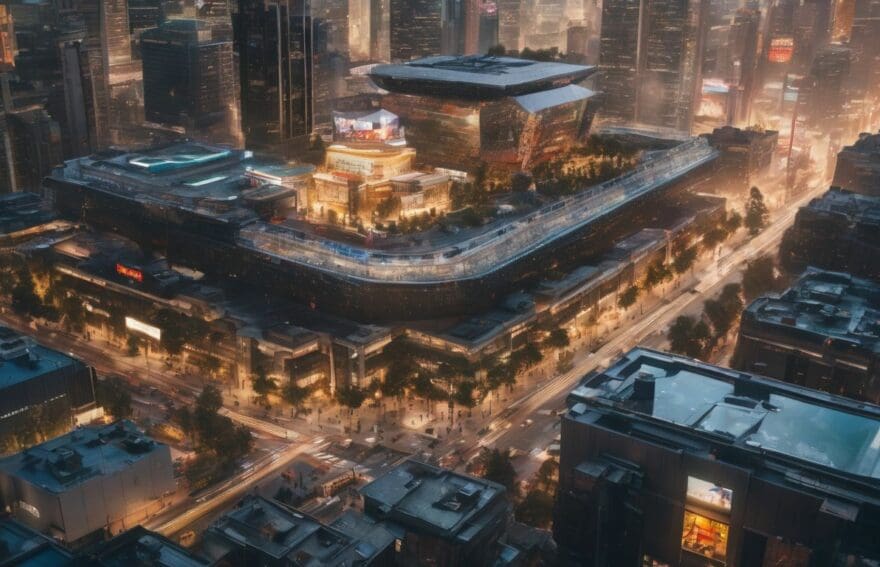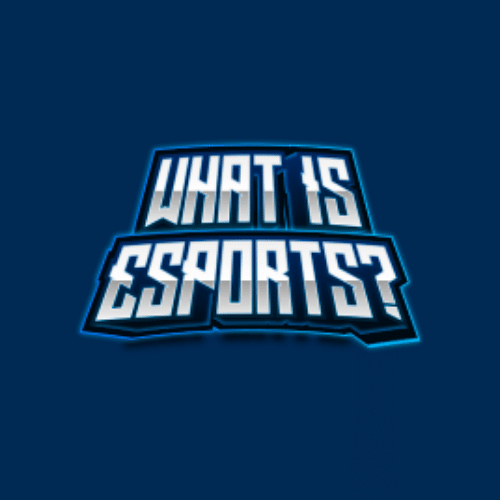From Pixels to Panels: FGC Influence on Comics and Art

Updated On: November 29, 2025 by 
Have you ever watched the dynamic pixels of your cherished video game and wished they could leap directly from your screen and onto the vibrant pages of a comic book? Many share this sentiment, as it’s no secret that the detailed pixel art, emblematic of so many beloved games, has etched a lasting impression on graphic novels and comics.
This article teems with revelations about how the Fighting Game Community (FGC) has become a wellspring of inspiration for artists and storytellers in the comic book sphere. Immerse yourself in our exploration as we uncover the seamless blend between virtual combat arenas and meticulously crafted comic panels!
The Influence of Fighting Game Communities on Comics and Art
Fighting game communities have had a significant impact on the world of comics and art, with their vibrant creativity and inspiration shaping popular culture. As we delve into this influence, we’ll explore how the rise of fighting games has transformed the artistic landscape and pushed boundaries in storytelling through visual mediums.
The rise of fighting games and their impact on popular culture
We’ve seen a massive surge in the popularity of fighting games over recent years, and it’s undeniable how they have shaped popular culture. Characters from iconic series like Street Fighter or Tekken now stand shoulder to shoulder with superheroes as representatives of modern mythology.
These pixelated warriors have jumped from arcade screens onto t-shirts, caps, and even inspired their own comics and animated shows.
As they carved out their niche in esports arenas, these games brought forth a new wave of artistic expression. Pixel art, once deemed retro, has flourished under the influence of video game aesthetics – there’s something magnetic about its simplicity yet capacity for intricate design that captures the imagination.
From canvas size for digital art to panel layouts in webtoons or manga pages sizes, artists across mediums draw inspiration from the dynamic visuals and storytelling elements pioneered by fighting games.
Their impact is vast; we’re talking about creations that dictate trends within comic book culture whilst endlessly invigorating pop culture artwork.
Creativity and inspiration from the FGC community
The rise of fighting games and their impact on popular culture has sparked a wave of creativity and inspiration within the FGC community. Gamers, artists, and writers draw from the diverse characters, compelling storylines, and visually stunning environments found in fighting games to fuel their own artistic endeavors.
The FGC’s vibrant energy, passion for competitive gameplay, and celebration of character design have contributed to a flourishing ecosystem of fan art, webcomics, and illustration that resonates with enthusiasts across various artistic mediums.
The interconnectedness between the gaming world and visual storytelling continues to inspire new forms of creative expression. As passionate gamers immerse themselves in the virtual worlds created by fighting game developers, they channel that same spirit into their own artistic pursuits – infusing comics, illustrations, and digital art with the essence of what makes the Fighting Game Community so captivating.
Comics Studies Programs and Online Communities
The growth of comics studies programs in universities has provided a platform for academic exploration of the art form. Additionally, online communities and resources play a crucial role in promoting and discussing comics, fostering a deeper understanding and appreciation for the medium.
The growth of comics studies programs in universities
Comics studies programs have seen a notable increase in universities, reflecting the growing academic interest in the medium. These programs delve into various aspects of comic book creation and analysis, such as art composition, writing techniques, and storytelling methods.
They provide valuable insights into understanding comics as an art form while also offering practical skills for aspiring comic book creators. The inclusion of these programs in higher education institutions underscores the increasing recognition of comics’ cultural significance and their impact on visual storytelling.
These university courses also explore how information is encoded and retrieved from memory within graphic novels, fostering a deeper understanding of problem-solving and decision-making within comic narratives.
Aspiring comic book creators can benefit from resources provided by these programs, including recommended reading lists and webtoon platform guides to enhance their artistic endeavors.
The role of online communities and resources in promoting and discussing comics
Online communities and resources play a pivotal role in promoting and discussing comics, offering platforms for creators to share their work, connect with fans, and receive feedback.
These virtual spaces provide invaluable support and encouragement for aspiring comic book writers and artists, fostering a sense of community within the industry. Online forums and social media groups also serve as hubs for passionate discussions about different aspects of comics, from artwork techniques to storytelling methods.
Additionally, these digital resources offer a wealth of educational materials that cater to both novice enthusiasts and seasoned professionals alike, making them essential tools for anyone interested in the world of comic books.
The accessibility of online communities allows individuals to immerse themselves in diverse perspectives on comics while learning from established creators. Engaging with such communities enables participants to expand their knowledge, gain inspiration, and form connections that can propel their creative endeavours forward.
The democratisation of information in online spaces has revolutionised the way people approach comic creation and appreciation across various genres. Overall, these digital platforms have become indispensable catalysts driving innovation within the realm of comics.
Collaborations and Partnerships
The crossover between fighting game and comic book franchises has led to exciting collaborations and partnerships, bringing together artists and writers from the FGC and comics world.
These creative alliances have resulted in innovative storytelling and visual styles that blur the lines between video games and traditional comic books.
The crossover between fighting game and comic book franchises
The collaboration between fighting game and comic book franchises has birthed exciting crossovers, bringing beloved characters from both worlds into new and dynamic narratives. This intersection has not only expanded the storytelling potential for these characters but also introduced fans to fresh interpretations of their favourite icons.
The mix of different art styles and character designs creates visually stunning collaborations that captivate audiences across both gaming and comics communities. Additionally, partnerships between artists and writers from the FGC and comics world have led to unique creative ventures, enriching the cultural landscape with diverse representations.
These collaborations aim to build immersive experiences that appeal to a broad audience, drawing on the strengths of both mediums to deliver engaging content. As passionate gamers explore novel narratives featuring iconic fighters in their favourite comic books, they get an enriched understanding of these characters’ depth and background.
Bringing together artists and writers from the FGC and comics world
Bringing together artists and writers from the FGC and comics world is an exciting collaboration that has resulted in unique creations. This partnership has led to the fusion of gaming and comic art, inspiring fresh narratives and captivating visuals.
- Artists from the Fighting Game Community (FGC) bring their dynamic character designs and action-packed scenes into the realm of comics, infusing a burst of energy into traditional storytelling.
- Writers who are avid members of the FGC community introduce engaging narratives that draw on the rich lore and intricate character backgrounds found in fighting games, adding depth to comic book plots.
- The joint efforts of FGC artists and comic creators result in visually stunning panels that capture the essence of intense gaming battles while weaving compelling storylines that resonate with both gaming enthusiasts and comic book fans.
- Through this collaboration, new avenues for storytelling emerge as artists experiment with panel layouts that reflect the fast-paced nature of fighting games, delivering an immersive experience for readers.
- The vibrant world – building skills honed by FGC members breathe life into comic universes, creating diverse settings that mirror the eclectic environments found in popular video game franchises.
The Intersection of Commerce and Art in Superhero Comic Book Film Adaptations
The influence of commercial success on superhero comic book film adaptations cannot be understated. These adaptations not only impact the storytelling and character development within the comics themselves, but also play a significant role in shaping the public’s perception and understanding of the entire medium.
The influence of commercial success on storytelling and character development
Commercial success significantly shapes storytelling and character development in superhero comic book film adaptations. The box office performance directly impacts the financial backing for future projects, influencing the direction of storylines and character arcs.
Successful films often lead to sequels or spin-offs, affecting how characters evolve and interact within the cinematic universe.
Superhero films’ commercial triumph also affects public perception and understanding of comics, driving interest in related merchandise, graphic novels, and digital content. This wide-reaching impact further fuels the demand for compelling narratives and well-developed characters that resonate with audiences across various mediums.
How these adaptations shape the public’s perception and understanding of comics
Superhero comic book film adaptations have a significant influence on the public’s perception and understanding of comics. The commercial success of these adaptations often leads to alterations in storytelling and character development, which can impact how the audience engages with the source material.
This intersection of commerce and art plays a crucial role in shaping public perceptions by bringing superhero narratives to a wider audience, thereby influencing their understanding of the comic book world.
Moreover, these adaptations serve as an entry point for individuals who may not be familiar with comics, introducing them to diverse characters and storylines present in the original source material.
Conclusion
The influence of fighting game communities on comics and art is evident in the creative inspiration they provide. Online communities play a crucial role in promoting and discussing comics, contributing to the growth of comic studies programs.
The crossover between fighting game and comic book franchises has fostered collaborations that bring together artists and writers from both worlds. Commercial success in superhero comic book film adaptations shapes public perception of comics, influencing storytelling and character development.
The impact of FGC on comics and art continues to evolve, bridging the gap between gaming culture and visual storytelling.
FAQs
1. What is the FGC’s impact on comics and art?
The FGC (Fighting Game Community) has greatly influenced comic book writing and video game art, inspiring artists to create dynamic comic panel layouts and broaden the reach of virtual comics exhibitions.
2. How does esports sway comic book fandom?
Esports influence can be seen in arcade gaming culture which fuels passion within the comic book fandom, bringing fresh themes and vibrant characters from pixels to panels in both comics and manga page sizes.
3. Can I use video game visuals in my own comic creation?
Yes! You can draw inspiration from video game art to decide your canvas size for comics, integrating the energy of gaming into every aspect of your artwork.
4. Are there any showcases for this type of crossover between games and comics?
Definitely! The rich interaction between fighting games and visual storytelling often features in virtual comics exhibitions, where fans explore how genres merge seamlessly from gameplay to narrative panels.


